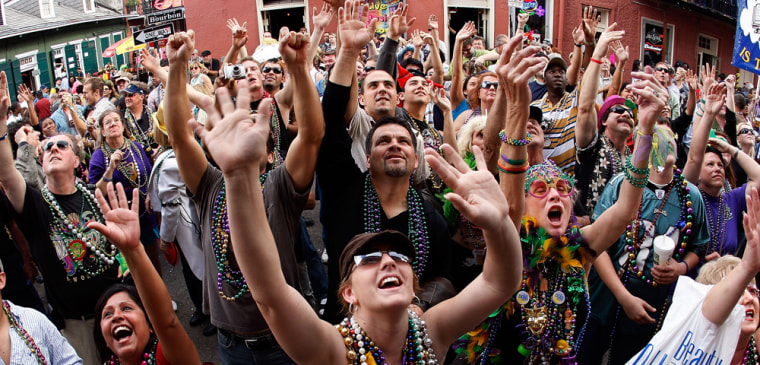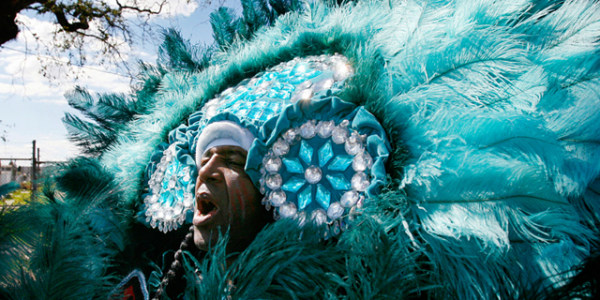In the short span of eight weeks, New Orleans was ground zero for to-die-for events that pumped up to $1 billion into its economy, generated publicity money can't buy and helped a hurricane weary city hold its head high.
Hundreds of thousands of visitors poured in for the New Orleans Bowl, the Sugar Bowl and Bowl Championship Series football games, Mardi Gras and the NBA All-Star game.
The city's tourism industry is bubbling over the economic injection, and salivating over the additional bounty on the horizon, including this weekend's Mardi Gras Marathon road race, a PGA tournament in March and the New Orleans Jazz and Heritage Festival in April.
More than 5,000 runners are expected for Sunday's marathon, which would make it among the biggest ever.
The city hopes the message is finally taking root that the recovery from Hurricane Katrina is getting into gear.
"Each event is spreading the word that New Orleans is open for business," said Sandra Shilstone, chief executive of the New Orleans Tourism Marketing Corp.
The end of a two-month run of events also is an "I told you so" moment for city pride.
New Orleans missed out on hosting a presidential debate — organizers judged the city not ready to handle such an event.
That makes the Commission on Presidential Debates look "very silly" and poorly informed, said University of New Orleans economist Janet Speyrer.
For New Orleans, where fantasyland is an everyday affair, such lingering misperceptions have been a plague.
Some neighborhoods are still in ruins, and many people are still rebuilding homes. But floodwaters have been gone for years and billions of dollars have been sunk into levee and flood protection.
Whether it's just a calm in the troubled storm recovery or something more lasting, attitudes on the street seem to be taking a shift for the positive. The run of big events seems to have been an effective tonic.
City Council President Arnie Fielkow said it's hard not to be upbeat, given what the city has pulled off in the past two months. "Hopefully," Fielkow said, "this will transition us into a great 2008."
For New Orleans' tourism-sensitive economy, the stakes are high.
Slideshow 8 photos
Big Easy returns
Tourism is a $4 billion-plus industry. Although most of the city flooded and some neighborhoods were devastated, most tourist venues — including the French Quarter — weren't hard hit by Katrina. But the chaos that followed the hurricane left New Orleans with a black eye. As its population has grown, so has the city's crime problem, offering a second worry for the hospitality industry.
Kelly Schulz, spokeswoman for the New Orleans Metropolitan Convention and Visitors Bureau, said 2008 is shaping up to be the best since Katrina for convention business. Bookings stand at 80-90 percent of pre-storm levels, Schulz said.
The NBA All-Star game, played Sunday night, was like a "three-hour commercial for New Orleans," complete with local musicians, attention to the work that remains in the city and the cultural treasures that stand ready for visitors, she said.
"You can't put a pricetag on that kind of attention," Schulz said.
It paid off for doorman Gerardo Monterroso, 48, who said business was brisk at the Hotel Monteleone in the Quarter.
"They were some good people, good tippers," Monterroso said Wednesday.
Down the street, taxi driver Danny Sylvert said things were crazy during All-Star weekend. Only traffic-clogged streets kept his business from being better.
The word-of-mouth advertising visitors take home is much more convincing than a glossy ad campaign, said UNO's Speyrer. And it bodes well leading to festival season, she said.
The French Quarter Festival in April is followed by Jazz Fest in late April and early May, and the Essence Music Festival in July. The city also is set to host a summit of North American leaders in April.
"I think this spring is going to be extraordinary because of the festivals and conventions and the excitement this has generated of New Orleans in its current state, not just the state perceived by a lot of people," Speyrer said.
Shilstone said her group hopes to keep the momentum going into summer, normally a slower period for the industry, with an ad campaign called "Come Out and Play in New Orleans."
The post-Katrina crime wave that jolted the city and worried tourism officials has so far not appeared to affect the big events. During the 12 final days of Carnival season there were reports of sporadic gunfire that injured several people near parade routes, and police said a Florida teenager and two women were hit in the legs by gunfire in the Quarter early Monday after the All-Star game. But police called much of the violence drug-related or based in personal grudges — not involving tourists or parade-goers.

